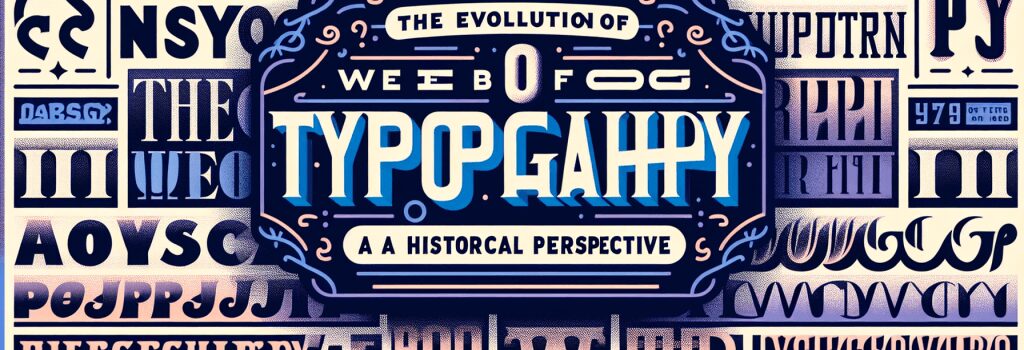The Evolution of Web Typography: A Historical Perspective

Once upon a time, in a galaxy not so far away called the Internet, the realm of Web Typography was a fairly mundane and predictable place. The evolution of web typography is nothing less than an epic journey, transforming the digital world we visit daily. From rudimentary designs to ornate scripts, the “The Evolution of Web Typography” is just as thrilling as any late-night coding binge – but with less coffee and more colorful characters.
In The Beginning: The Time of Times New Roman
When we rewind the clock to the dial-up epoch (ouch, the sound), our choice of fonts was defeated by brute of simplicity. Times New Roman, Arial, Courier New, and other simple serifs and sans serifs ruled. These were known as “web-safe fonts.” If web design were a high school, Times New Roman was the school captain.
Weapons of choice in this phase were HTML (HyperText Markup Language) and a bit of CSS (Cascading Style Sheets). PHP (Personal Home Page or Hypertext Preprocessor) and JS (JavaScript) were still off the radar.
The Dark Ages: An Era of Flash
The concoction of the thrilling dynamism of Flash in web design was a period of the wild west in web typography. The utilization of Flash had its pros like creativeness and distinctiveness; however, it had its share of downsides too. The downsides being, it was time-consuming, complicated, and as harmonious with SEO (Search Engine Optimization) as oil and water.
Dawn Of Web Fonts
Fast forward to a time around 2010, CSS3 was introduced and with it, a magical thing called @font-face rule. Quoting the famous comic book Spider-Man, “With great power comes great responsibility,” web designers were given a playground of thousands of fonts to choose. But like a mutant side effect, it also meant dealing with licensing issues and cross-browser compatibility.
Google To The Rescue: Rise of Google Fonts
2010 saw another monumental leap in the typography galaxy. A hero, Google, in his shining armor (Google Chrome browser) introduced Google Fonts. Free, open-source, and easy-to-use, it was as if every web designer had just leveled up in their game.
Current Day: Responsiveness and Accessibility
Now, we live in an age of web typography where it’s not just about how “cool” your website looks, but how responsive and accessible it is. This needs an understanding of not just HTML, CSS, PHP, and JS but also more sophisticated tools, such as WordPress. Web designers now have more font choices than ever, but with it comes the need to ensure that websites are easy to read on any device – from a tiny smartwatch to a massive 4K screen.
There are still challenges in the realm of web typography – ensuring compatibility across all devices, matching fonts to brand identity, and more. But who knows? In a few years, we might see another dramatic twist in this never-ending story.
So, gather your coding arsenal, brave designers, and daring developers. The chronicles of Web Typography are waiting for you to inscribe your own adventure.
Conclusion
The evolution of web typography, like a gripping and intricate book, tells us a story of innovation, creativity, and constant change, studded with the ever-changing dynamics of user experience and technical advances. Similar to the chanting mantras of web design – adaptability, accessibility, and responsiveness, the world of web typography continues to evolve. Who knows what the next chapter holds?
Meanwhile, grab a cup of coffee (or perhaps a green tea), load up your code editor, and get ready to type-a-way into the vibrant world of web typography.
Do remember, in the push and pull of classic fonts and new-generation typefaces, always bet on what appeals to and works for your audience. After all, the user is the real brevard of your web kingdom!
Happy coding!


